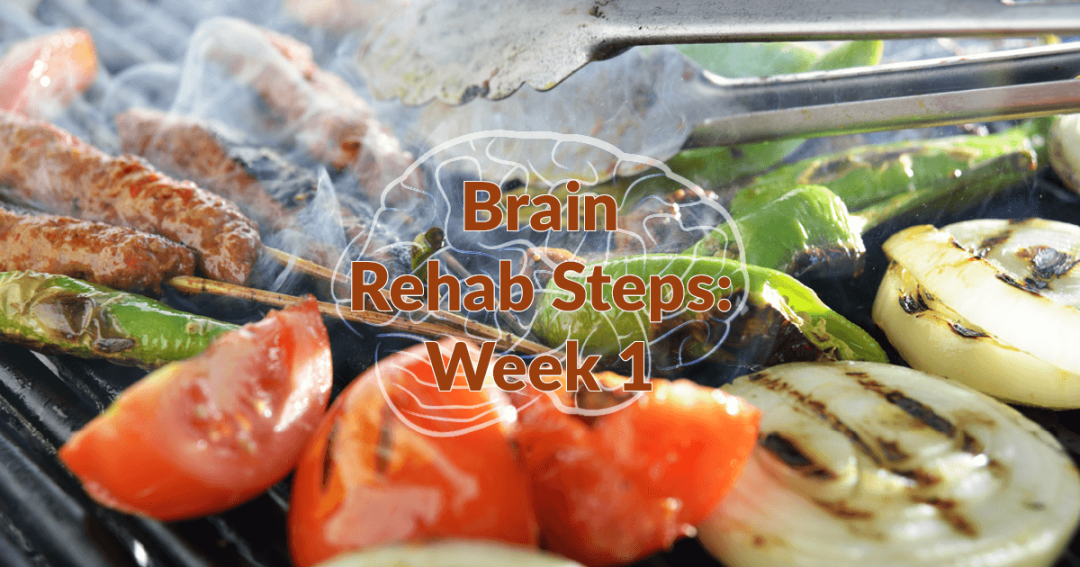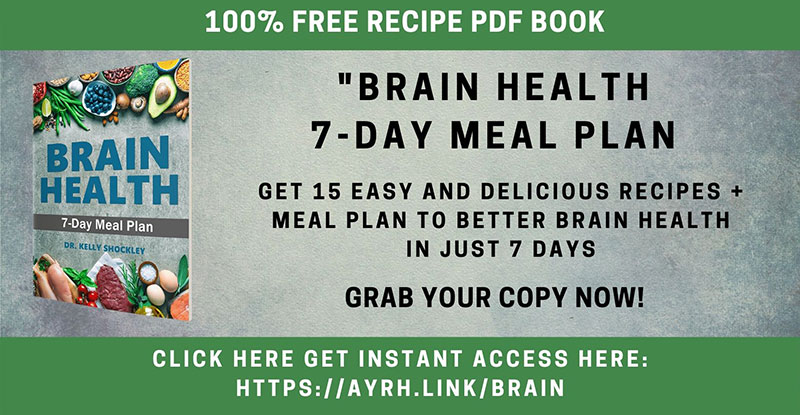Over the past few weeks, I’ve been detailing the importance of brain health. Some of you may be wondering how to put it all together now. Today’s focus is just that, putting it all together in ways that will make implementing the steps doable. In addition to what has been focused on thus far, you’ll also see some other areas that are critical for reaching optimized brain health! Do you know what’s really fascinating about the brain too? It doesn’t matter what you’re past life may have been like, you have the ability to improve the health of your brain going forward. What you do today and consistently going forward will change the path you’re on. You completely have the power to choose a life of happiness and health! Here’s to you becoming the healthiest version of yourself yet!
In preparation for implementing this new lifestyle, it would be a great idea to determine your baseline. Have your bloodwork done at this point and ask for a hemoglobin A1C and vitamin D level to be done in conjunction. You may want to note your blood pressure, weight, body fat percentage, and hip/waist measurements. I would also write out any current symptoms you’re experiencing, how your energy levels are, how you sleep, what you feel like when you wake up in the mornings, etc. After implementing the following processes for a minimum of 4 weeks, have your blood tests redone to see the changes.
Over the next month, you’ll be given a strategy for creating a successful change to your current lifestyle. I’ve broken it down to focusing on one particular area each week. If you feel like this is too quick, by all means, implement it slower. This is simply a guideline. You make it yours.
Week #1: Focus on Food
Start by adding in your nutrition that was summarized here. Nearly all of the supplements can be found at any health food stores and online. My favorite brand can be found at the PureShock Store. Probiotics should be taken on an empty stomach, but the rest can be taken with or without food. For proper dosage, follow the recommendations or ask your doctor for specifics.
Clear out your kitchen and eliminate the items you’ll no longer be consuming.
Out of sight, out of mind kind of concept. If it’s not there, you’re less likely to consume it. Don’t rely on your willpower. Set yourself up for success. Your family doesn’t need to consume other foods either. You’ll be doing everyone a bigger favor by changing how everyone eats even if there’s some resistance at first. Start by removing the following:
- All gluten-containing products including whole-grain and whole-wheat forms of bread, noodles, pasta, pastries, baked goods and cereals.
- All forms of processed carbohydrates, sugars and starch. In other words, get rid of all junk foods even if it claims to be healthy. If it’s in a package, the chances of it being good for you are slim to none.
- Packaged foods labeled “fat-free” or “low-fat”.
- Margarine, vegetable shortening and any commercial brand of cooking oils even if they’re organic.
- Any and all products made from soy or containing soy.
If this change is too overwhelming, start by focusing on adding in the good foods first. Don’t get hung up on all of the foods you’re not going to be eating. If you start by adding in the good, it will help transition you away from the bad, which will help you be successful at improving your lifestyle.
The fun part, restock your kitchen with the following:
- Healthy fats: extra-virgin olive oil (never heat), sesame oil, coconut oil, grass-fed butter, ghee, almond milk, avocadoes, coconuts, olives, nuts and nut butter, cheese (except blue cheeses) and seeds (flaxseed, sunflower seeds, pumpkin seeds, sesame seeds, and chia seeds).
- Low-sugar Fruit: avocado, bell peppers, cucumber, tomato, zucchini, squash, pumpkin, eggplant, lemons, and limes.
- Protein: whole eggs, wild fish, shellfish and mollusks, grass-fed meat, fowl, poultry, pork, and wild game.
- Vegetables: Easiest rule, anything that grows above the ground (minus corn) have as much as you would like. Stay away from or drastically reduce the veggies that grow beneath the ground initially. You can add these back in after the first month, but sparingly.
Eat the following in moderation (a couple of times per week or less ideally):
- Carrots and parsnips
- Cottage cheese, yogurt, and kefir
- Cow’s milk and cream
- Non-gluten grains: amaranth, buckwheat, rice, millet, quinoa, sorghum, and teff.
- Sweeteners: natural stevia and chocolate (choose dark chocolate that’s at least 70% or more cocoa)
- Whole sweet fruit: Berries are optimal, be extra cautious of sugary fruits such as apricots, mangos, melons, papaya, prunes, and pineapple
- Wine: one glass a day if you choose, preferably red.
There’s a lot of talk on fasting these days too. There is great benefit to “intermittent fasting”. The easiest way to intermittent fast is to simply eat between the hours of noon and 7 pm. You can also do a 24 hour fast to help the body shift faster. Please continue any medication you are taking and drinks lots and LOTS of water.
If you’re needing recipe ideas, check out my FREE 7-Day Eat Your Way to Better Brain Health meal plan. One of my favorite kitchen gadgets for making simple substitutions is the spiralizer.
If you’re stressed or concerned about your brain health, you can get the details with this quick and easy home test kit. Check it out and rest-assured.










